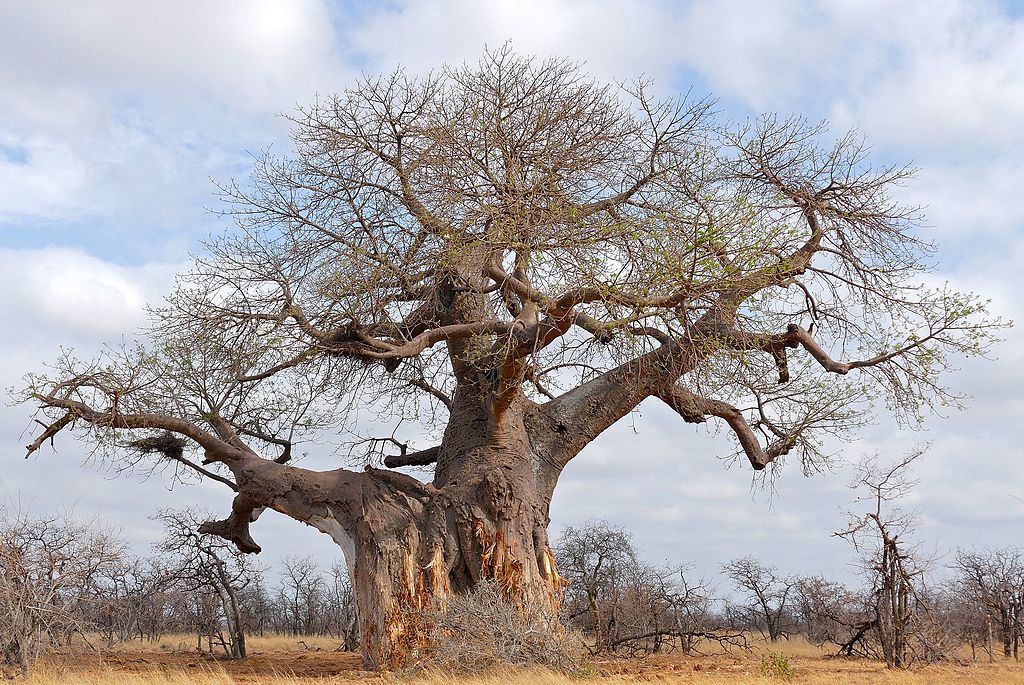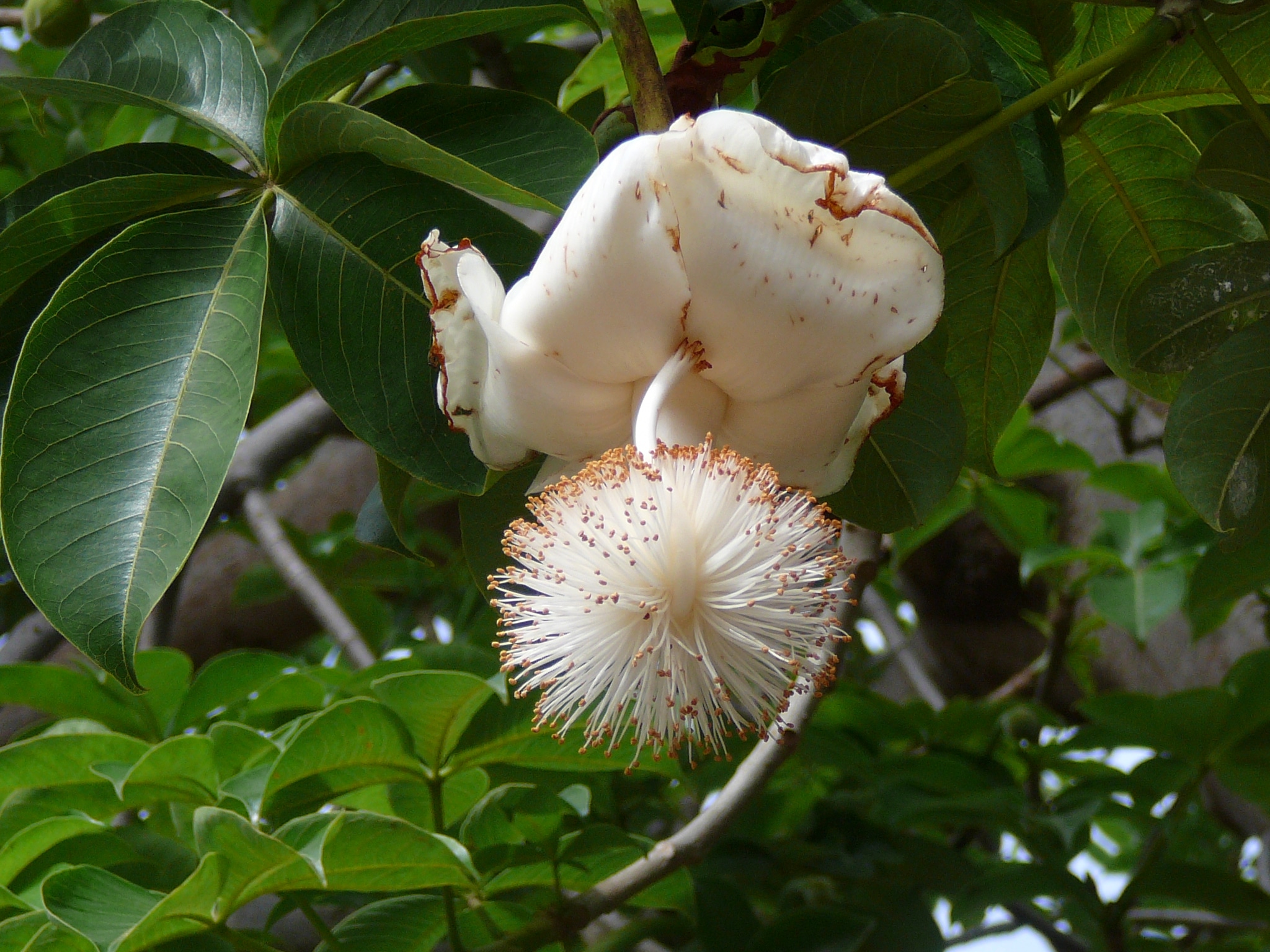
Image sourced from Flickr/Bernard DUPONT
El Adansonia digitata It is surely the best known African tree by all. On the net there are countless images of specimens living in the savannahs of the country, but... the truth is that there are few that show it with all its beauty; that is, with its leaves.
It has a very striking trunk, and without a doubt that is what usually attracts us most about it, but its foliage is also worth mentioning. However, what it's like?
What is the origin and characteristics of the Adansonia digitata?

Image sourced from Wikimedia/Bernard DUPONT
This is a deciduous tree known as the monkey bread tree or baobab endemic to semi-arid areas south of the Sahara (Africa). It can reach 25 meters in height, although the circumference of its trunk exceeds 40 meters. The leaves are green and compound, and fall when the (drier) season of the year begins.
The flowers are hermaphrodite and white., appearing only in adult specimens, during the summer. And the fruits are similar in shape to that of a small melon, which contains numerous seeds.
What uses does it have?
The baobab is a tree that used as an ornamental plant, whether in the garden and even as a bonsai. But it is interesting to know that in Africa its leaves are consumed cooked, and that they also use them to feed the cattle. What's more, the fruit, which is known as Senegal squash or monkey bread, it is rich in fiber and with it pasta is produced, as well as refreshing drinks similar to lemonades that can be used to treat fever.
As if that were not enough, its black seeds and the shell of the fruits provide oil. And with the bark of the trunk, paper is made.
As a curiosity, tell you that elephants and gazelles enjoy eating its green leaves and soft wood. And it is an excellent appetizer 😉 .
What are the care of the baobab?

Image sourced from Wikimedia/Atamari
La Adansonia digitata is a tree that it needs a tropical-dry climate to be able to live. This means that not only must there be no frost at any time, but also that the minimum temperature must be above ten degrees Celsius. In addition, it is important that there is a marked dry season so that it can lose its leaves. If you don't, it could weaken over the years, as it needs to spend a period of rest.
The land that has to have excellent drainage, so it is recommended that it be sandy. If you want to have it in a pot, I recommend using pumice, akadama or similar, which are substrates that will facilitate the rooting of the plant and prevent it from rotting as long as the irrigation is rather scarce.
It multiplies by seeds in spring, which must be placed in hot water for 24 hours before sowing them in seedbeds. You can also try cuttings at the end of winter or spring, impregnating their base with rooting hormones and planting them in individual pots with pumice, for example.
The baobab is a very interesting tree, don't you think?
Hello Monica.
An impressive species. His trunk is spectacular.
The flower is also very beautiful, and I am particularly struck by the fact that it loses its leaves in summer, just unlike trees in temperate climates, it makes sense, it goes to rest at the most extreme weather.
The number of uses it has is also interesting, a real gift for areas with such extreme weather.
Thank you very much for your article, very illustrative.
A cordial greeting,
GALANTE NACHO
I'm glad that you liked it.
Yes, it is a very, very interesting species. Too bad it's so sensitive to cold.
Regards!
I liked your writing and I am going to ask you if you can recommend a suitable size of pot to transplant it. I planted it 1 year ago with a 4 cm tall trunk and a 12hx11a pot. The truth is that I keep it indoors and it retains all its leaves and a long branch of 20 cm and another of 2 cm, both with large leaves. Thank you for your dedication.
Thank you
Hi Angels.
I am very happy to know that you liked it. It is a pleasure to write something and know the opinion of the readers. Thank you 🙂
Regarding your doubt, first of all it is to know if it really needs a change of pot. When young it grows at a good pace, but even so, if no roots come out of the pot's drainage holes and/or if you still don't see any roots, it is best to wait a little longer before transplanting.
Now, if that is already the case, then my advice is to find a pot that is wider than it is deep so that the trunk can thicken. You do not say how thick the trunk is, but assuming that it measures, for example, between 1 and 2 centimeters, and taking into account the height of the tree, it is interesting to plant it in a pot of about 20cm in diameter.
If you have any more questions, ask.
Regards!